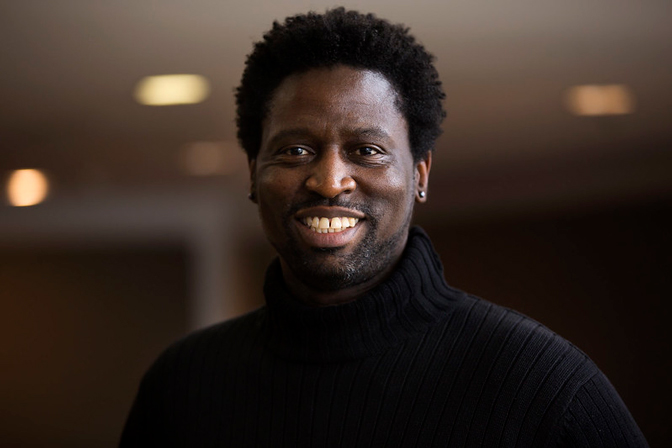
Interdisciplinary study seeks to mitigate transmission of respiratory viral diseases such as flu and COVID-19 in children
Michigan Engineering researchers will help reveal pathways for virus detection and transmission

Michigan Engineering researchers will help reveal pathways for virus detection and transmission
A pair of Michigan Engineering professors will investigate the transmission of the flu and other respiratory illnesses, including coronaviruses, in child care settings. And they’ll receive some help from ferrets and child-friendly robots – not to mention a host of experts from multiple universities – along the way.
They are part of a team led by Linsey Marr, Charles P. Lunsford Professor in Civil and Environmental Engineering at Virginia Tech, with $8.8 million in funding from Flu Lab, an organization that supports bold approaches to defeat influenza.
“By studying how influenza and other respiratory illnesses spread, we aim to improve our safeguards for preventing infection,” said Krista Wigginton, associate professor of civil and environmental engineering at the University of Michigan, who serves as the lead for thrust one of the project.

Called MITIGATE FLU (Multidisciplinary InvesTIGation to Ease inFLUenza), the project brings together a convergence of disciplines with researchers from Michigan Medicine and the U-M School of Public Health as well as experts in virology, immunology, and modeling of disease ecology at the University of Pittsburgh, Georgetown University, and Emory University. By the end of the four-year study, researchers hope to understand how behavioral and environmental factors affect transmission rates and identify the most effective interventions. Children in child care centers have high rates of respiratory illnesses due to their immature immune systems, offering researchers an ideal setting to evaluate the virus and identify measures to reduce exposure.
“The way that we’ve been studying flu hasn’t been giving us the answers that we need to prevent transmission, but this project may change that,” said Herek Clack, associate professor of civil and environmental engineering.
The project will be done in three thrusts with researchers from Michigan Engineering contributing to each stage of the project. The first thtust will seek to identify new methods for detecting influenza to determine principal exposure pathways among children.
“Our goal is to innovate flu virus detection in these indoor settings to help us understand when children are exposed to the viruses and how many viruses they are exposed to,” said Wigginton.
To detect the virus, the team will program Embodied Moxie to engage with children in face-to-face interactions while collecting air and surface samples of viruses. In the final thrust of the project, the robots will be deployed into six child care centers across southeast Michigan. Additionally, researchers will identify new methods to differentiate between infectious and non-infectious respiratory viruses.
“When a virus leaves one’s mouth in a droplet of spittle, how far does that droplet travel? How long does the virus remain infectious in that spittle droplet, while it’s evaporating on that tabletop surface? If somebody comes along and wipes their hand across it and touches their eye, what’s that transmission rate?” said Clack. “Getting to these details will help us differentiate between viral RNA that has no capability to infect you versus a virus that can actually infect you.”

Researchers from the University of Pittsburgh and Emory University will lead thrust two of the project, using animal models to reveal principal modes of transmission for influenza and other respiratory viruses. These include aerosols, droplets and contaminated surfaces, across a range of indoor humidity, temperature, and chemical air contaminant levels. It’s necessary to mimic these environmental conditions since new research refutes long-standing studies suggesting that the virus degrades when humidity increases.
Researchers will examine virus transmissibility among groups of ferrets given that their behavior patterns closely align with those of children. Michigan Engineering will support this project thrust by designing environmentally controlled aerosol generation and enclosures for testing transmission. Researchers will also test interventions that could be translated into child care settings, including various air purification systems.
The project’s third and final thrust focuses on environmental factors driving flu transmission in child care centers sourced through Michigan Medicine’s child care infections surveillance program. This thrust, led by U-M’s School of Public Health, will see the deployment of robots developed in thrust one.
“This is the dream team and we have the expertise to tackle this research wholeheartedly,” said Clack. “At every one of these intersections or boundaries between disciplines, there are opportunities to close some of the chasms in our understanding of the flu.”

Lanard Ingram
Associate Director of News and Communications